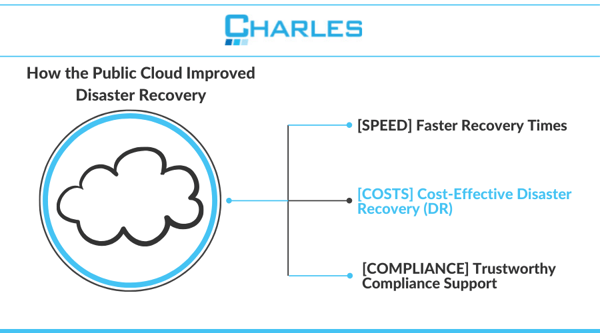
The reliance of businesses on technology has grown exponentially over the years. This increased dependence on IT has also led to an increased need to enhance backup and disaster recovery (DR) strategies. Because the intensity of natural disasters continues to increase, the economic consequences have also become much greater.
Cyberthreats are also on the rise — and not just the Coronavirus-related cybercrimes that the United Nations has been warning businesses about during the ongoing global crisis.
Greater risks and an increased number of data needing protection have driven higher spending in Disaster-Recovery-as-a-Service (DRaaS) solutions. Market Research Future’s recent research shows that the DRaaS market will increase by 44% between 2017 and 2023.
For a small- or medium-sized business (SMB) in Connecticut whose “IT department” consists of one guy and his laptop, warding off cybercriminals and protecting enterprise data is a herculean task. Luckily, technologies like the cloud have evolved to stop growing dangers. Here’s how the public cloud, in particular, has fundamentally changed disaster recovery for the better.
[SPEED] Faster Recovery Times
Even during a disaster, many of your competitors are compelled to step up their efforts. If your business suffers from an outage due to human error or a natural disaster, you must do everything you can to get back online, give your employees and clients assurance that you’re able to go back to business-as-usual, and successfully recover from the outage quickly.
How quickly you recover from an outage is determined by your recovery time objective (RTO) or the amount of time that a critical program can remain down without harming your business. Your RTO is typically set by your IT department based on factors like your application priorities and budget. Thanks to public cloud computing’s orchestration technologies, businesses’ automated tasks in the cloud — including disaster recovery — are seamlessly coordinated, enabling fast recovery of critical workflows.
Learn more about RTO and how to speed up disaster recovery processes, by requesting a free, instant quote from our experts today.
[COSTS] Cost-Effective Disaster Recovery (DR)
In an ideal world, there would be no disasters to protect from and, therefore, no need to spend on disaster recovery. But disasters do happen and businesses must invest in protection. In the real world, even businesses that have never had any reason to implement a DR plan must invest in one, just in case.
Fortunately for those who don’t have the time and resources to manage their own data center for disaster recovery and other computing needs, the public cloud offers an attractive alternative.
With public cloud DR plans, computing resources can be paid At Time of Test (ATOT) or At Time of Disaster (ATOD) periods. These are common in usage-based DR set-ups, which effectively control budgets for computing resources you don’t use. In tough economic times, the smart allocation of resources is crucial.

[COMPLIANCE] Trustworthy Compliance Support
As if fending off persistent threats isn’t challenging enough, businesses must also comply with the changing regulations of the GDPR, HIPAA, and PCI DSS, among other regulatory authorities.
But consistently meeting security and compliance standards is often easier said than done. In fact, when the GDPR was enforced in 2018, it was discovered that only a small percentage of the cloud applications that businesses use were compliant. For companies that use hundreds of cloud-based apps, this presents a huge challenge.
Businesses operating within regulated industries must share the responsibility of compliance, regardless of the cloud computing service they’re using. Luckily, there are already several public cloud providers who could share that responsibility. Access to great technical expertise and new technology, the physical separation of data from potentially unsafe premises, and increased resiliency make public cloud disaster recovery an attractive solution compared to purely in-house recovery processes.
The public cloud is not a one-size-fits-all solution for backup and disaster recovery, but it offers excellent support for your business’s unique DR strategy. Your enterprise has highly specific requirements determined by factors such as the nature and volume of data you handle, your budget, and your particular operational requirements.
You need to augment your in-house IT policies with the expertise of a managed IT services provider that can help you benefit from predictable restore times and faster access to recovered data. Charles IT assists businesses in and around Connecticut, recovering their data, designing recovery plans, providing cloud services, and much more! Reach out to our team so we can help design a business continuity plan or enhance your existing one.
Read our free eBook, 7 Rules Even the Most Basic Backup & Disaster Recovery Strategy Plan Must Follow, and learn how your business can benefit from a solid backup and recovery plan.




